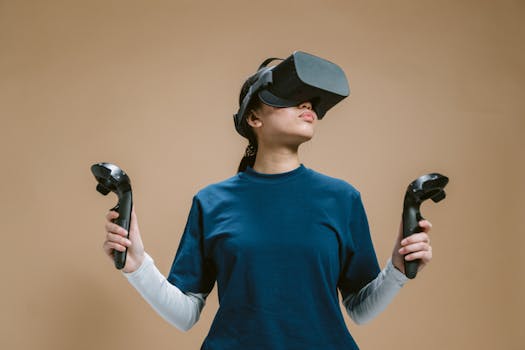
Virtual Realities: The Next Frontier in Human Connection is a rapidly evolving field that is transforming the way we interact with each other and the world around us. With the advancement of technology, virtual realities are becoming increasingly sophisticated, allowing us to connect with others in entirely new ways. From social media platforms to online gaming communities, virtual realities are redefining the concept of human connection and community.
One of the most significant advantages of virtual realities is their ability to transcend geographical boundaries, allowing people from all over the world to connect and interact with each other in real-time. This has opened up new opportunities for global communication, collaboration, and socialization. For example, virtual reality platforms such as VRChat and Facebook Spaces enable users to create their own avatars and interact with others in virtual environments, creating a sense of presence and community that is similar to being in the same physical space.
Another area where virtual realities are making a significant impact is in the field of education and training. Virtual reality-based training programs are being used in a variety of industries, including healthcare, aviation, and the military, to provide immersive and interactive learning experiences that simulate real-world scenarios. This approach has been shown to be highly effective in improving knowledge retention and skill development, as well as reducing the risk of errors and accidents.
The Future of Virtual Realities

As virtual reality technology continues to evolve, we can expect to see even more innovative applications and use cases emerge. One area that holds great promise is the development of virtual reality-based therapy and treatment programs. For example, exposure therapy, which is used to treat anxiety disorders such as PTSD, can be delivered through virtual reality, allowing patients to confront and overcome their fears in a safe and controlled environment.
Another area that is likely to see significant growth is the use of virtual realities in the field of entertainment. Virtual reality-based movies and games are already being developed, offering a new level of immersion and interactivity that is not possible with traditional forms of entertainment. As the technology continues to improve, we can expect to see even more sophisticated and engaging virtual reality-based experiences emerge.
Challenges and Limitations

While virtual realities offer many benefits and opportunities, there are also challenges and limitations that need to be addressed. One of the main concerns is the potential for social isolation and decreased face-to-face interaction, as people spend more time interacting with others in virtual environments. This can have negative effects on mental and physical health, as well as social skills and relationships.
Another challenge is the need for standardization and interoperability across different virtual reality platforms and devices. Currently, there is a lack of consistency in terms of hardware and software requirements, making it difficult for developers to create content that is compatible with multiple platforms. This can limit the reach and accessibility of virtual reality-based applications and experiences.
Conclusion

In conclusion, Virtual Realities: The Next Frontier in Human Connection is a rapidly evolving field that is transforming the way we interact with each other and the world around us. While there are challenges and limitations that need to be addressed, the benefits and opportunities offered by virtual realities are significant. As the technology continues to improve and become more accessible, we can expect to see even more innovative applications and use cases emerge, from education and training to entertainment and therapy.
Ultimately, the future of virtual realities is likely to be shaped by a combination of technological advancements, social and cultural trends, and economic and environmental factors. As we move forward, it is essential to consider the potential implications and consequences of virtual realities on human connection and society as a whole, and to work towards creating a future that is equitable, sustainable, and beneficial for all.